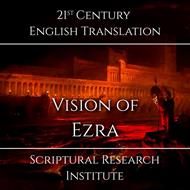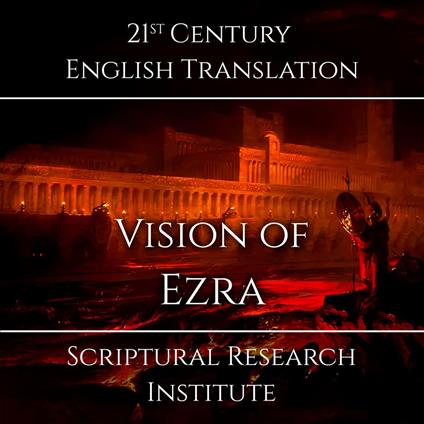Vision of Ezra
The Vision of Ezra is a similar work to the Greek Apocalypse of Ezra, however, only survives in Latin manuscripts dating to the 11?? through 13?? centuries. The Vision is unique among the surviving Apocalypses of Ezra due to its significant Egyptian influence. The Vision may have started as a Christian reworking of an old Egyptian description of the underworld, as it references a lot of old Egyptian underworld iconography. In the Vision, Ezra is taken on a tour of the underworld by messengers of the underworld (Tartarus) and then is taken to heaven where he begs for mercy for those in the underworld. This is similar to the Greek Apocalypse, except in the Apocalypse, Ezra is first taken to the Sky, where he meets God, and then God sends him to the underworld with the messengers from the sky to guide and protect him. The Greek Apocalypse appears to be an attempt to “correct” the text, as “messengers of Tartarus” could be read as either “messengers from the underworld,” or “messengers from the god of the underworld.” In the 8?? century BC, the ancient Greek poet Hesiod wrote in his Theogony, that Tartarus was the third oldest god, coming into existence after Chaos (creation) and Ge (Earth). He further described Tartarus as being as far beneath Hades, as the Earth was beneath the sky. He described the distance from the Sky to the Earth, the Earth to Hades, and Hades to Tartarus as being the distance it would take for an anvil to fall for one week. Therefore, in the Greek mindset of the early Christian era, the Vision would have been read as having messengers sent from either the deepest part of the underworld, or the leader of that place, which would have been the devil. As this is contrary to Orthodox teachings, in which the messengers work for God, and the demons work for the devil, it would have needed to be theologically corrected if it was to circulate in the Byzantine Empire. The Vision itself appears to have been written by a Coptic Christian or Gnostic, as the underworld is largely inspired by the ancient Egyptian underworld. There are several unique underworld elements in the Vision that support a Coptic origin, including dogs attacking the dead, two great lions, and an immense worm, all at the western horizon. While dogs devouring corpses is not unique to Egypt, it was a significant concern in Egypt. Dogs were so closely associated with the dead that the embalming god Anubis was pictured with a jackal’s head. The original point of embalming the dead was to stop dogs and jackals from eating the dead.\\"
-
Autore:
-
Durata in (hh:mm:ss):00:19:53
-
Anno edizione:2025
-
Editore:
Formato:
Gli Audiolibri venduti dal nostro sito sono in formato MP3 e protetti da un DRM proprietario Kobo.
Compatibilità:
Gli Audiolibri venduti dal nostro sito possono essere ascoltati sul tuo smartphone o tablet tramite la APP gratuita Kobo Books scaricabile da iOS o Android. Gli Audiolibri non possono essere scaricati in locale o trasferiti su un client di ascolto diverso da quello fornito tramite Kobo. Non è possibile ascoltare gli audiolibri con la Kobo APP Desktop. Puoi ascoltare gli Audiolibri tramite determinati eReader Kobo, utilizzando cuffie o casse con Bluetooth. Visita la pagina degli eReader per avere maggiori dettagli.
Cloud:
Gli Audiolibri venduti singolarmente dal nostro sito sono immediatamente sincronizzati sul tuo account personale in automatico. Successivamente all'acquisto, sono subito disponibili all'ascolto tramite i client di lettura Kobo compatibili.
Clicca qui servissero ulteriori informazioni



